The Fragile Sea Newsletter TFS #07
We discuss a mixing pot of subjects - the state of AI, will there be food shortages this summer? good things and not so in energy, pandemics - are we ready? some remarkable discoveries, and more!
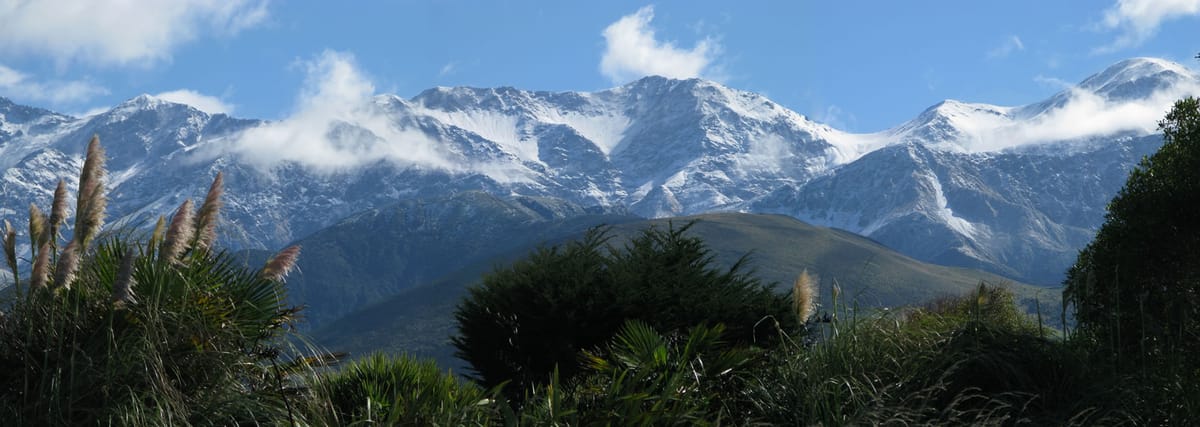
Welcome!
The web version for mobile and desk is here
(- the references will pop up when selected - not available on the email version.
- note also, the email version does not include updates)
Welcome to the seventh Fragile Sea newsletter.
We pass briefly through AI in this newsletter, and spend more time on connections from many and varied areas of interest. I hope you enjoy the journey.
Quickreads

- AI, devtech, comms. A quick look at llama 3 and Mistral's Mixtral LLMs
- Science, biology, envirotech. Pandemics, vulnerabilities, and the healing effect of immersion in nature
- Air Food Water. Will there be food shortages this summer? Farmers are not happy
- Energy, sun, space, physics, weather. Updates in energy reviews; the troubled journey of offshore wind farms; the outlook for EVs; cybersecurity exposures in EV recharging; and grid energy storage developments.
- Media, publishing, social, gaming. Airchat – the next big social network?
- the 'zines. Robotics, and the state of AI in 15 graphs
- Psych, philos, language, neuro, mind. Time perception changes when working out, and when immersed in nature
- The groves of academe. English as the language of scientific journals – is there a problem? And ongoing issues in publishing scientific papers
- Discussion. We belay the journey through corporate and institutional connections of interest until the next newsletter, except for a brief discussion on Jamie Dimon's Letter to Shareholders in the J.P. Morgan Annual Report 2023, just released. It's an interesting read.
- Things that go wow. Mountain Chickadees are found to have amazing memory feats; and the Voyager One team have unbelievably achieved communications again. Both are remarkable.
- I wrap up in What's coming up, and finish with a short Kokinshū poem.
- TFS#08 will be out Thursday, 11th April, at 8:00 pm, UTC.
Let's go!
AI, devtech, comms

Brief updates
Richard Dewey, Co-Founder and CEO of Proven, has a great article on The Gradient about LLM applications for the financial market. [1]
Yennie Jun discusses gender bias in AI and some of the work to uncover, evaluate and measure different aspects on The Gradient [2]. Well worth the read.
Sam Jeans at DailyAI reports on two new versions of Meta's Llama 3 model and a third due soon [3]. Jesus Rodriguez at TheSequence adds some cool details about Llama 3 [4]. Harry Guinness writes a really good article on how Llama 3 works and why it is important [5].
Around the same time, mid-April, Ryan Daws, senior editor at Techforge Media, wrote two articles, introducing Llama 3 [6] and the Mistral AI's new 8x22B [7] which seems to have some pretty amazing functionality, built on a Sparse Mixture-of-Experts (SMoE) model, used also by xAI in their Grok-1 model [8].
Sparse Mixture-of-Experts (SMoE)
What does it mean? Well, if one defines an 'expert' in this model as a type of feed-forward neural network, then feeding the training data 'signal' selectively to experts significantly reduces the overall computational use of parameters, a type of 'conditional computation'.
The inventors, seeking a way to increase model capacity without proportionally increasing computation, found that their models "achieve significantly better results than state-of-the-art at lower computational cost" [9]. As noted by Pham et al., in a Feb 2024 paper, "by modularizing the network and activating only subsets of experts per input, SMoE offers constant computational costs while scaling up the model complexity, which often results in improved performances" [10].
Matthew Gunton on Medium explains SMoE [11], as does Sanseviero et al., at Hugging Face [12]. The original paper by Shazeer et al., came out in 2017 [9]. MistralAI released their paper on their language model Mixtral 8x7B in Jan 2024 [13], and xAI released the weights and architectures of their Grok-1 model in March 2024 [8].
Whichever way one looks at these developments, the progress in tweaking LLMs for efficiency and the rapid innovations are truly astonishing. Now, progress stands to leap ahead again if work on quantum transformers can deliver [14]. They may be able to train normal LLM transformers, as well as significantly reduce LLM energy consumption, among other benefits.
AI PCs
In other AI developments, AI-enabled PCs may be just around the corner, writes Isabelle Bousquette in the WSJ, with some interesting comments from business leaders as to whether they will buy or wait [15].
Science, biology, envirotech

Integrating science and art
I came across a fascinating project and study on integrating science, art, and engagement to strengthen communities, led by a not-for-profit in Easton, Pennsylvania, which seems to be having a good effect: "Such innovative projects can lead the way in community resilience, though we need to understand and support long-term preparedness beyond a time limited set of interventions" [16], [17].
Things we can't ignore
I recall the last chapter of The Uninhabitable Earth, by David Wallace-Wells [18], in which he wrote about the human attribute of ignoring something that seems to be existential and troubling, which invokes a sort of flight mentality.
Harvard Business Review had an article around the same time on why we aren't motivated to address climate change [19], citing a 2010 study on Construal-level theory of psychological distance [20], saying, if I understand correctly, that we abstract dangers the more distant they appear.
A more recent study on the psychology of climate anxiety compared responses to the COVID-19 global pandemic with climate change, and found approximately the same result, noting that the lack of effective risk perception leads to behaviours that worsen climate change [21].
Politics and polemics
The Fragile Sea has a policy of eschewing politics as much as possible, but it's a constant barrage one can't avoid or ignore entirely no matter how hard the effort. The climate has become such a political football, with notes of 'wokeness', it’s hard to take in all the various viewpoints and find some sense amidst the noise.
The Pew Research Center offers a wider and deeply interesting study on 'Why Some Americans Do Not See Urgency on Climate Change' in 2023 [22]. It's likely the same in other societies worldwide.
I hope to find practical ways in which civil society can 'dig in' and do something positive, like local cleanup initiatives, but the stark reality is that, as much as we try individually, and as much as we need the global financial and economic architecture to continue, a few larger companies have an outsized contributory responsibility for emissions [23], [24]. No one is off the hook here.
And, as much as we don't like change, something is going to have to give - maybe it's the case that we have to hit rock bottom, wherever that will be, before politics and polemics get out of the way and we can actually work together to restore our world and help nature to restore itself.
By then there may not be much left. On a micro scale, already the insects and birds in my back garden are noticeably fewer.
Far from mind
A great many people are just trying to survive and get on day to day, let alone spare a moment to consider the state of the world. Yet every day there are more reports:
- Scientists can't explain the significant heat anomaly in 2023 [25]
- Carbon dioxide levels in the air have passed a new milestone [26]
- Extreme coral bleaching points to the worst summer on record for the Great Barrier Reef [27]
- New diseases are destroying trees and crops virtually everywhere [28]
- Bird flu is devastating populations right across the animal kingdom [29], [30], and now it has been found in milk, though according to experts that poses 'virtually' no risk to humans [31], followed by two reports of the first humans infected by bird flu [32], [33]. Yesterday, the New York Times reported that bird flu had spread to 33 herds in eight states [34]
- The Economist reported the alarming rise of dengue fever in South America as the world warms [35], a corollary to The Conversation reporting in January alarming rises in cases of dengue fever across Europe [36].
With all the culling of animals and deaths from bird flu of entire animal populations (in the millions from both), it's almost impossible to get one's head around the scale of a global disease that hasn't yet shown itself to be a pandemic-level danger to humans. Mutation is a powerful process, the truth is, we just don't know yet if it will.
At some stage, pieces of our systems, and our world, here and there, will break down; we can't keep pushing it all far from mind forever.
Are we ready?
Three books I am ploughing through right now: At the Edge of Mysteries: The Discovery of the Immune System by Shantha Perera [37], Viruses by Dorothy H. Crawford [38], and Viruses Made Easy (March 29, 2024) by Jon Adams [39].
It's good to understand our preparedness (or lack thereof), and the constant evolutionary fight for survival and innovation through mutation in nature that makes up our world. The bottom line is, a pandemic can come from any angle, and with nature weakened, we need to be prepared [40], [41], [42], [43], [44], [45], [46].
The healing power of immersion in nature
Immersion in nature, to me, can be a powerful healing remedy to stupefaction and resignation. Only a few miles from the farm I grew up on in Northland, New Zealand, is a small forest park called the A.H. Reed Memorial Park, on the edge of Whangarei city.
It only takes 30 minutes to walk from the bottom entry by the river, through tall Kauri and other native New Zealand flora (Totara, Pūriri, Mānuka, Horoeka, ferns), up to the top where a magnificent waterfall can be felt, smelt, heard thundering, and seen [47], [48], [49].
The park is like the forest areas on the farm I was raised on, a few miles down the road, except we didn't have any of the large native Kauri left. But being inside that wonderland, wherever it can be found, can be a deeply healing experience. The smells and sounds are fantastic, the immersion seems to lift the heart to better places.
Is there a 'wood-wide' web?
I have started watching the new series of Our Living World narrated by Cate Blanchett. With her beautiful voice, I can't help seeing Galadriel in the waves and the trees, spellbinding as she speaks. I have long studied mycorrhizal fungi and the 'wood-wide web', including the books Mycelium Running by Paul Stamets [50], Mycorrhizal Planet by Michael Phillips [51], The Hidden Life of Trees by Peter Wohlleben – a fantastic book [52], and Colin Tudge's The Secret Life of Trees [53].
I was interested in the science behind the Avatar-memed 'everything is connected in the forest' sense that Cate Blanchett also narrates. I do believe there's something in it, even the possibility that some plants have sight sense [54], but the science is not unequivocal, though it is still fascinating [55], [56], [57], [58] [59]. Plants and trees can do things I never thought possible, and though the connections might be less than imagined, they are still there.
The positive effects of nature
I have three books here on the positive effects of nature on the human soul, begging to be read, Braiding Sweetgrass by Robin Wall Kimmerer [60], Cloud Land by Penny van Oosterzee [61], and Last Child in the Woods, by Richard Louv [62], each with their own stories on the rewards and benefits of a deep immersion in, and engagement with, nature. Perhaps summer will be kind and allow me to read them all. But only if I finish Call of the Reed Warbler by Charles Massy first! [63].
Air, food, water

I keep hearing about 'Food 2030' an EU research initiative to change food systems with 11 pathways for action [64] [65]. It's about promoting sustainable food production and delivery through to consumption, with some neat ideas in there.
Troubled times for farming
We're going to need all the ideas we can muster, because farmers are not happy with the pitiful return they are receiving – with protests across Europe in February [66], [67], [68], [69], [70], [71].
This is something we cannot ignore. UK farmers are facing much diminished crops on account of 18 months of exceptionally wet weather [72], and nutrient runoff from dairy farms is reaching far beyond sustainable levels [73]. This is a problem also in other dairy producing countries around the world, albeit with a good deal of focus on mitigating runoff. Ireland, for example, is well advanced in helping farmers with nutrient management [74], [75], [76], [77].
We have to face two likely events: 1) food will become more expensive, and 2) there may be major shortages this summer [78], [79], [80], [81]. The University of York even noted the likelihood of civil unrest [82].
I am wondering at the resilience of global food production and delivery systems, and currently researching further for later newsletters.
Energy, sun, space, physics, weather
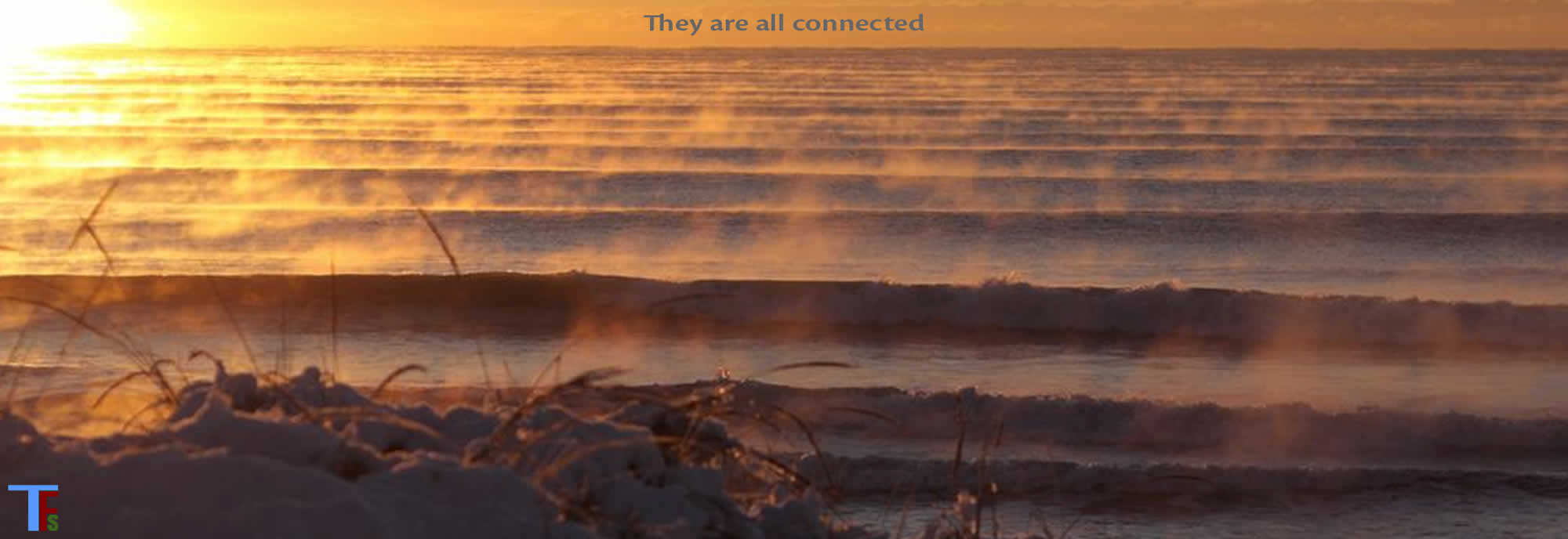
Energy review in Europe
Ember released their 2024 European Energy Review, noting a record drop of 19% in the use of fossil fuels in 2023 to their lowest level ever, at less than one third of the EU's electricity generation. "Renewables rose to a record 44% share, surpassing 40% for the first time". A good overview is provided [83], with the report in pdf format [84]. Some good news for once, maybe.
Wind farms and the future
That said, offshore wind farms are having a torrid time, one wonders if this is just a dip or a long-term trend [85], [86], [87], [88]. The economics don't seem to stack up, unless power prices increase, and there is still an issue with end-of-life turbine blades [89], though some enterprising companies are coming up with solutions [90], [91], [92].
We must persist, somehow, to transition economies to lower carbon emissions. It's estimated 200,000 offshore wind turbines will be needed to reach net zero [93] which doesn't seem completely out of the question, albeit with a few knowledge gaps to fill in [94]. We need to push on.
Global EV outlook
Even though there has been a cooling in demand for EV cars, the world's electric car fleet is set to reach 17 million new sales in 2024 [95]. The IEA Global EV Outlook 2024 report makes for some fascinating reading: "Growth expectations for 2024 build on a record year: in 2023, global sales of electric cars neared 14 million, reaching 18% of all cars sold. This is up from 14% in 2022. Electric car sales in 2023 were 3.5 million higher than in 2022, a 35% year-on-year increase" [96]. The report includes developments in battery technology.
Cybersecurity and EV charging
Recent reports on green energy also show there is no easy way to a net zero emissions future. Allysia Finley, reporting in WSJ at the end of March, described how EV battery recharging, solar panels and other digital-controlled products, open "extra access to the grid which enemies can exploit" [97]. She cites a paper, Acharya et al., 2023, that discusses the need for both preventive and corrective means, in which the authors note that none are foolproof, and that corrective means like cyber insurance are necessary to mitigate loss and incentivise preventive investments [98].
Grid energy storage developments
Spectrum magazine carries a super article on the Kauai Island Utility Cooperative's massive energy storage facility based on Tesla's Powerpack 2 Battery system, and further developments using inverters in Australia. It's a bit technical, but a fantastic story on electricity grids under conditions of disturbance (a lightning strike for example), or failure (a generator trip for example) and some positive solutions for grid resilience [99].
Media, publishing, social, gaming

Andrew Hutchinson on SocialMediaToday asks whether Airchat will become the next big social network. It's similar to Twitter but adds voice for every post [100]. Airchat is promoted as 'Just Talk'.
Adweek has three ripper articles: Sara Century writes about a McCann London campaign to engage children to learn through their favourite games [101]; Activision Blizzard Media has an Essential Guide To Gaming Audiences – it's awesome [102]; and, by registering for free with Adweek, an article entitled 'The Future of Women in Gaming With Letta J and Jay-Ann Lopez' by Breana Mallamaci [103].
I registered and it took me right back to the article – nice! And it was worth it – the video blog was fun to watch and learn from – I wish them happy and successful trails ahead.
the 'zines

The zines are full of politics right now, and I guess it will get heavier through the summer and towards the end of the year. It can be hard to find gold and uplifting stories among the clatter but here are a few nuggets that caught my eye:
The Atlantic. Alan Taylor fronts a feast of photos on Chile's amazing national parks – true eye candy, and what a beautiful country [104].
Spectrum have nifty videos on robots that can't fall over [105], which are eerie, fantastic, and funny to watch.
Spectrum also has a great article summarising the annual AI Index Report from Stanford Institute for Human-Centered Artificial Intelligence (HAI), a 393-page monster. Spectrum have put it into 15 graphs that "explain the state of AI in 2024" and they are kind of neat.
Eliza Strickland carries the story noting this year's report has "an expanded chapter on responsible AI and new chapters on AI in science and medicine, as well as its usual roundups of R&D, technical performance, the economy, education, policy and governance, diversity, and public opinion". A light came on for me at least once reading the story and browsing the graphs [106].
Psych, philos, language, neuro, mind

In the last newsletter on creativity and AI, we discussed ways in which the brain alters our sense of time to synchronise aural and visual data. Maybe it's catching, because two recent studies reported in Psypost seem to add to the story. One reports that working out slows our perception of time [107], the other that being in nature can alter our sense of time [108], both reputable studies. I need to do more of both, and if it works, the next newsletter might be late!
The groves of academe

The English language and science papers
A few papers and research are emerging on English as the primary language for academic papers (98% according to one report [109]), and how challenging that is for global science. It stands to reason, for example, with around 600m Spanish language speakers in the world.
Academic papers
There are also ongoing issues around open access, scientific journals, and unrest among scientists and academics on scientific research publishing. The whole media and publishing industries are changing immensely. I have been tracking this for many years in all its colours and strands and hope to write more in coming newsletters. A flavour of the issues can be found in these references [110], [111], [112], [113]. It's worth staying abreast of, as AI starts to have a noticeable impact on research, academic papers, and the methods and channels for publishing in science.
Discussion

Alas, that is all we have time for this newsletter, I will travel around the corporates and the institutions next newsletter, apart from one item of interest: Jamie Dimon's lengthy Letter to Shareholders in the Annual Report 2023, just released.
On p. 43, he notes that J.P. Morgan first started using AI over a decade ago, with the first mention in his 2017 letter to shareholders. He writes that they now have more than 2000 AI/machine learning experts and data scientists and over 400 use cases in production in areas such as marketing, fraud and risk, "driving real business value across our businesses and functions" [114].
He also notes elsewhere that we may be entering "the most treacherous geopolitical era since World War II", and that the geopolitical and economic forces may not be fully understood until played out over multiple years. He cites his concerns, among others, as high levels of debt, ongoing deficit spending, and the "unknown effects of quantitative tightening". A later section is headed A Pivotal Moment for America and the Free Western World... and is deeply interesting. The letter is well worth the read.
Things that go wow

The memory of Mountain Chickadees
Andy Corbley, writing on the Good News Network, reports on a study released by researchers at CU Boulder and the University of Nevada, Reno, that Mountain Chickadees, with a brain a little larger than a pea, can memorise 10,000 food storage locations [115]. That's a pretty big figure to arrive at. The researchers located nearly a hundred genes involved in this remarkable feat [116]. There's hope for me yet.
Voyager 1 come in!
Corbley also writes on the team that found out why Voyager 1 had gone silent in two-way communications and effected a repair of sorts by splitting the software to different locations. By sending the repair over 15 billion miles in 22 ½ hours, they were able to reactivate systems after a silence of five months. There are further details on how they did it and how much longer they can keep scientific instruments running – amazing job [117].
What's coming up

Alas, the cherry blossom tree I wrote about last newsletter, in my favorite walking and running park just down the road, is now green with new leaves after two weeks of magnificent blossoms. Everywhere in the residential streets of Dublin, Magnolias, and other wonders of nature are in full bloom, some streets are a joy to walk or drive down.
Summer is coming – it's always time for good cheer and for living our best lives. We have much to be thankful for.
TFS#08 will be out Thursday, 9th May, at 8:00pm, UTC. Its free to subscribe here.
Thanks for reading. I hope you can join me again, till then, take care,
Brent
You have fallen, yet
That you are here, I will believe,
O, cherry blossom!
That spring is past —
Don't tell me that!
TEIJI-IN UTA'AWASE 06 [118]
Bye for now
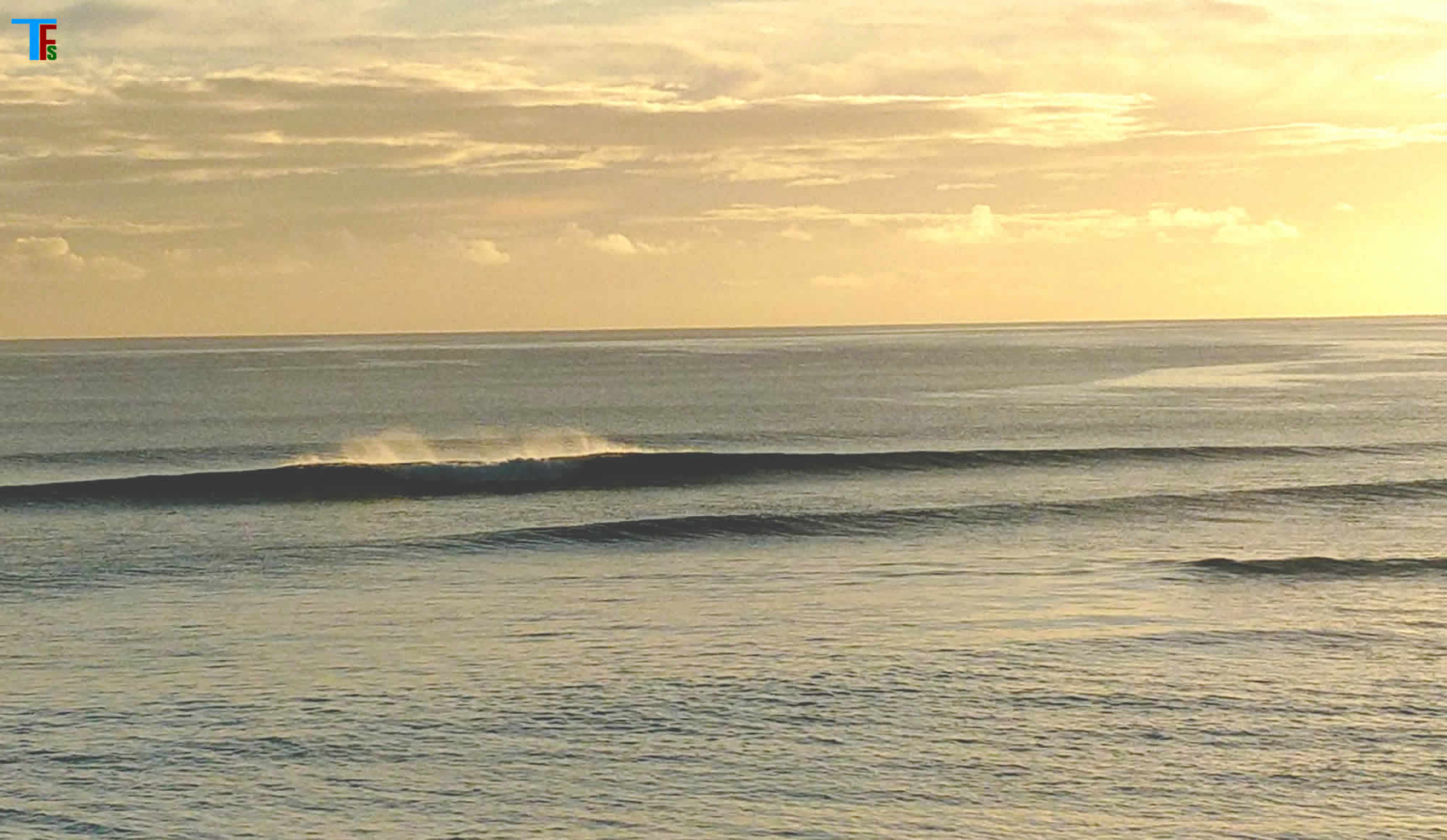
Room 5000 - a short story I wrote in 1981 about a computer becoming sentient
TFS#09 - What do Neoliberalism, Friederich Hayek, markets, algorithms, AI, and creativity have in common? We delve into these subjects for more connections
TFS#08 - What are the correlations between growth, debt, inflation, and interest rates? In this business edition of The Fragile Sea, we go hunting in corporate, institutional, and academic papers for insights in the face of heightened political, economic, corporate, and environmental risks, and more besides!
TFS#07 - We discuss a mixing pot of subjects - the state of AI, will there be food shortages this summer? good things and not so in energy, pandemics - are we ready? some remarkable discoveries, and more!
TFS#06 - Can AI produce true creativity? We discuss music, art and creativity, why human creators have a strong future, and why we must assure that they do
TFS#05 - Practical guides for implementing AI, in other news, a revisit on CRISPR, and events in spaceweather, fake publishing, spring blossoms, and more!
TFS#04 - Has Artificial General Intelligence (AGI) arrived already? We look at the goings on in AI over the past four months
TFS#03 - AGI and machine sentience, copyright, developments in biotech, space weather, and much more
TFS#02 - Sam Altman's $7trn request for investment in AI, economic outlooks, and happenings in biotech, robotics, psychology, and philosophy.
TFS#01 - Economic outlooks, and happenings in AI, social media, biotech, robotics, psychology, and philosophy.
AI Connections Series
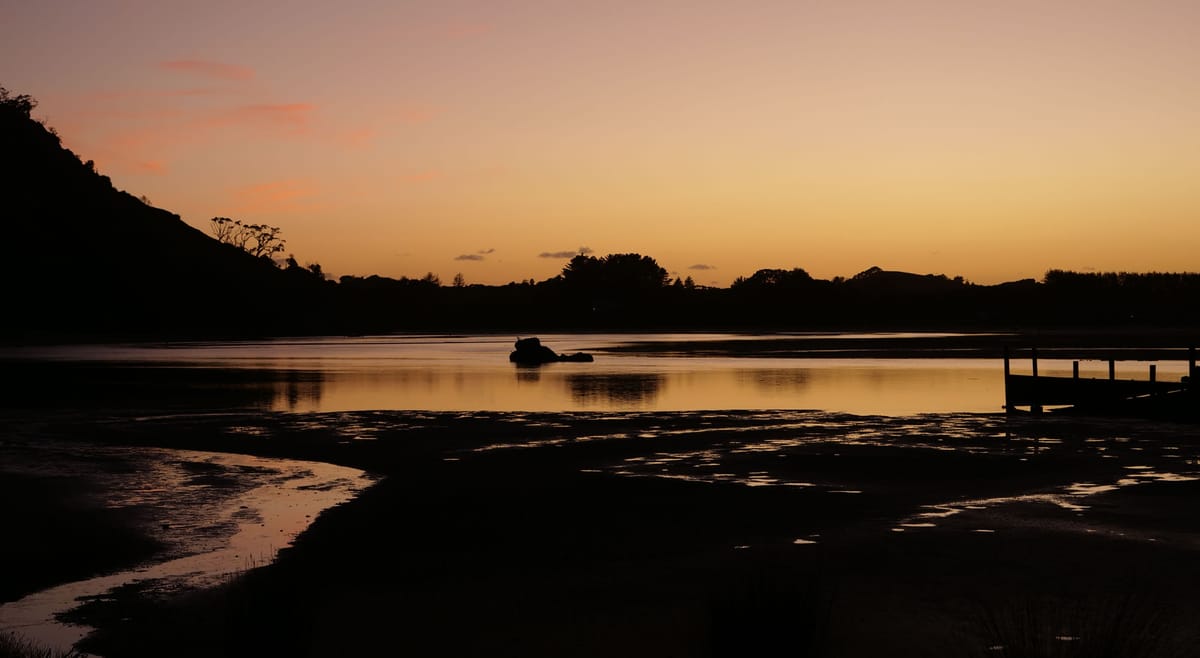
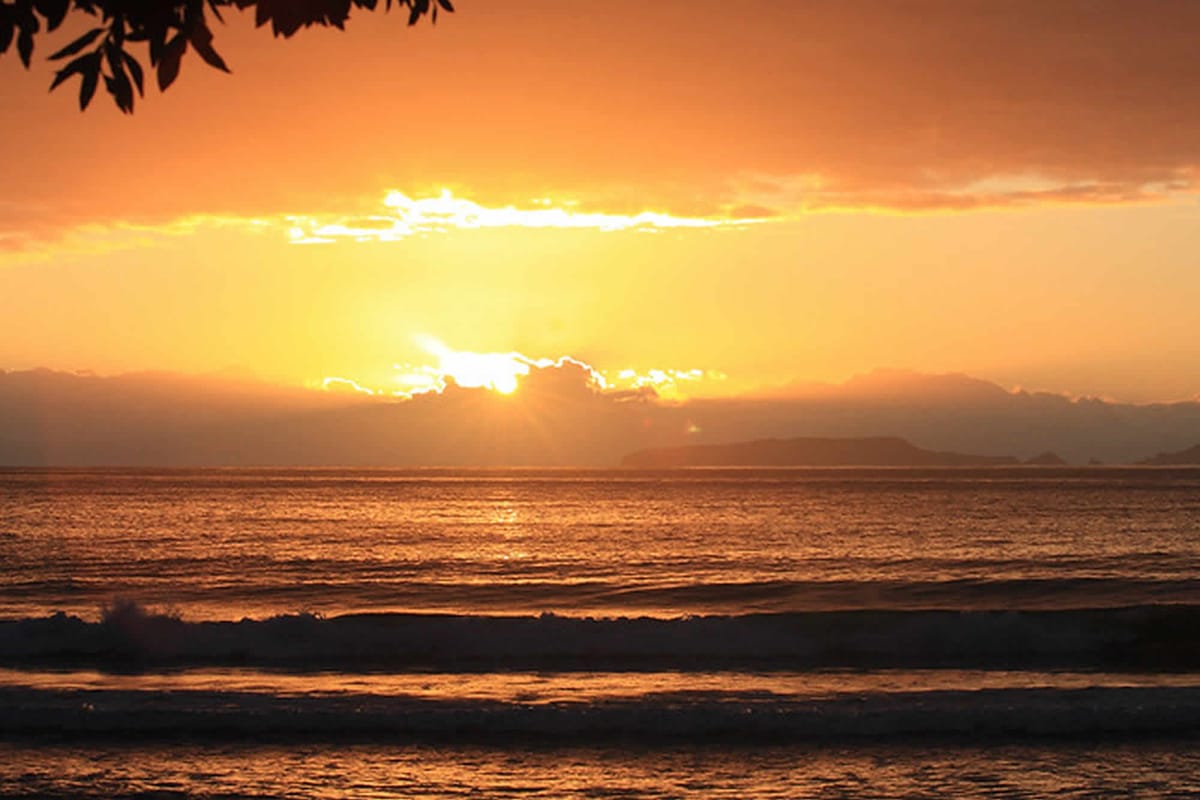
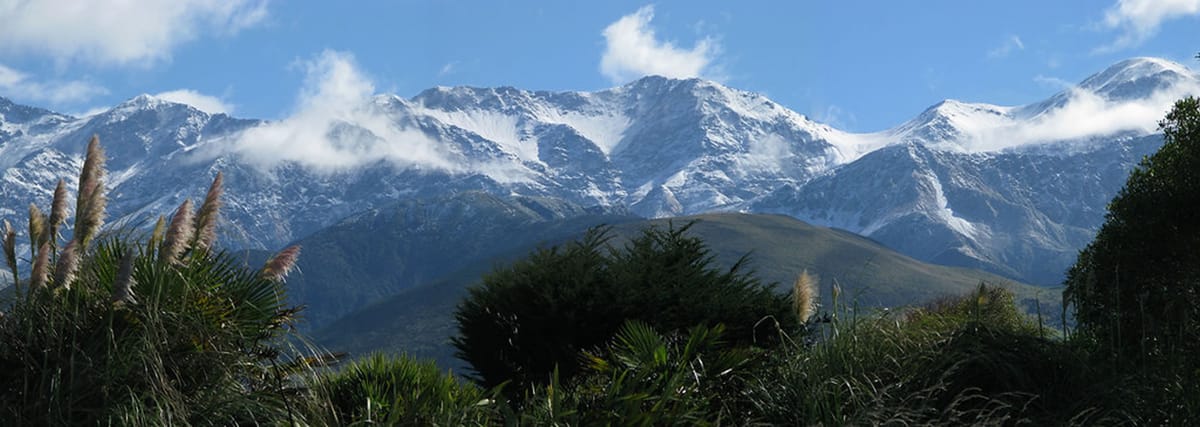
[1]: R. Dewey, 'Richard Dewey and Ciamac Moallemi, 'Financial Market Applications of LLMs', The Gradient, 2024', The Gradient, Apr. 20, 2024. https://thegradient.pub/financial-market-applications-of-llms/
[2]: Y. Jun, 'A Brief Overview of Gender Bias in AI', The Gradient, Apr. 08, 2024. https://thegradient.pub/gender-bias-in-ai/
[3]: S. Jeans, 'Meta drops two versions of the Llama 3 model with a third imminent', DailyAI, Apr. 18, 2024. https://dailyai.com/2024/04/meta-drops-two-versions-of-the-llama-3-model-with-a-third-imminent/
[4]: J. Rodriguez, 'Some Cool Details About Llama 3', TheSequence, Apr. 21, 2024. https://thesequence.substack.com/p/some-cool-details-about-llama-3
[5]: H. Guinness, 'What is Llama 3 and why does it matter?', Apr. 19, 2024. https://zapier.com/blog/llama-meta/
[6]: R. Daws, 'Meta raises the bar with open source Llama 3 LLM', AI News, Apr. 19, 2024. https://www.artificialintelligence-news.com/2024/04/19/meta-raises-bar-open-source-llama-3-llm/
[7]: R. Daws, 'Mixtral 8x22B sets new benchmark for open models', AI News, Apr. 18, 2024. https://www.artificialintelligence-news.com/2024/04/18/mixtral-8x22b-sets-new-benchmark-open-models/
[8]: xAI, 'Open Release of Grok-1', Mar. 17, 2024. https://x.ai/blog/grok-os
[9]: N. Shazeer et al., 'Outrageously Large Neural Networks: The Sparsely-Gated Mixture-of-Experts Layer.' arXiv, Jan. 23, 2017. http://arxiv.org/abs/1701.06538.
[10]: Q. Pham et al., 'CompeteSMoE—Effective Training of Sparse Mixture of Experts via Competition.' arXiv, Feb. 04, 2024. https://www.doi.org/10.48550/arXiv.2402.02526
[11]: M. Gunton, 'Understanding the Sparse Mixture of Experts (SMoE) Layer in Mixtral', Medium, Mar. 21, 2024. https://towardsdatascience.com/understanding-the-spare-mixture-of-experts-smoe-layer-in-mixtral-687ab36457e2
[12]: O. Sanseviero, L. Tunstall, P. Schmid, S. Mangrulkar, Y. Belkada, and P. Cuenca, 'Mixture of Experts Explained', Dec. 11, 2023. https://huggingface.co/blog/moe
[13]: A. Q. Jiang et al., 'Mixtral of Experts.' arXiv, Jan. 08, 2024. http://arxiv.org/abs/2401.04088.
[14]: R. Rao, 'Quantum Computers Can Run Powerful AI That Works like the Brain', Scientific American, Apr. 22, 2024. https://www.scientificamerican.com/article/quantum-computers-can-run-powerful-ai-that-works-like-the-brain/
[15]: I. Bousquette, 'AI Gives Enterprise Device Market Something to Be Excited About', Wall Street Journal, Apr. 19, 2024. https://www.wsj.com/articles/ai-gives-enterprise-device-market-something-to-be-excited-about-e8f60b83.
[16]: M. Haklay, 'Integrating Science, Art, and Engagement to Strengthen Communities', Eos, Apr. 16, 2024. http://eos.org/editor-highlights/integrating-science-art-and-engagement-to-strengthen-communities
[17]: K. A. Semmens, R. H. Carr, K. Maxfield, and J. Sickler, 'CREATE Resilience Through Science, Art, and Community Engagement', Community Science, vol. 2, no. 3, p. e2023CSJ000028, 2023, https://www.doi.org/10/gtjzpp
[18]: D. Wallace-Wells, The uninhabitable earth: a story of the future. London: Allen Lane, 2019.
[19]: A. Markman, 'Why People Aren't Motivated to Address Climate Change', Harvard Business Review, Oct. 11, 2018. https://hbr.org/2018/10/why-people-arent-motivated-to-address-climate-change.
[20]: Y. Trope and N. Liberman, 'Construal-level theory of psychological distance', Psychological Review, vol. 117, no. 2, pp. 440–463, 2010, https://www.doi.org/10/dwj5xx
[21]: J. Dodds, 'The psychology of climate anxiety', BJPsych Bull, vol. 45, no. 4, pp. 222–226, https://www.doi.org/10/hr37
[22]: G. P. Funk Alison Spencer, Alec Tyson and Cary, 'Why Some Americans Do Not See Urgency on Climate Change', Pew Research Center, Aug. 09, 2023. https://www.pewresearch.org/science/2023/08/09/why-some-americans-do-not-see-urgency-on-climate-change/
[23]: J. Watts, 'Just 57 companies linked to 80% of greenhouse gas emissions since 2016', The Guardian, Apr. 03, 2024. https://www.theguardian.com/environment/2024/apr/04/just-57-companies-linked-to-80-of-greenhouse-gas-emissions-since-2016.
[24]: L. Cozzi, O. Chen, and H. Kim, 'The world's top 1% of emitters produce over 1000 times more CO2 than the bottom 1% – Analysis', IEA, Feb. 22, 2023. https://www.iea.org/commentaries/the-world-s-top-1-of-emitters-produce-over-1000-times-more-co2-than-the-bottom-1
[25]: G. Schmidt, 'Climate models can't explain 2023's huge heat anomaly — we could be in uncharted territory', Nature, vol. 627, no. 8004, pp. 467–467, Mar. 2024, https://www.doi.org/10/gtqgsr
[26]: A. Bhatia, 'Carbon Dioxide Levels Have Passed a New Milestone', The New York Times, Apr. 20, 2024. https://www.nytimes.com/interactive/2024/04/20/upshot/carbon-dioxide-growth.html.
[27]: G. Readfearn, 'Extreme coral bleaching could spell worst summer on record for Great Barrier Reef, authority says', The Guardian, Apr. 17, 2024. https://www.theguardian.com/environment/2024/apr/17/great-barrier-reef-extreme-coral-bleaching.
[28]: A. Petroni and R. W. Poulsen, 'Plant apocalypse: how new diseases are destroying EU trees and crops', The Guardian, Apr. 24, 2024. https://www.theguardian.com/environment/2024/apr/24/plant-apocalypse-how-deadly-imported-diseases-are-destroying-eu-trees-and-crops-aoe.
[29]: K. Price, 'Bird Flu Is Picking its Way Across the Animal Kingdom—and Climate Change Could Be Making it Worse', Inside Climate News, Apr. 02, 2024. https://insideclimatenews.org/news/02042024/todays-climate-bird-flu-migration-disease/
[30]: A. Mandavilli and E. Anthes, 'Bird Flu Is Infecting More Mammals. What Does That Mean for Us?', The New York Times, Apr. 22, 2024. https://www.nytimes.com/2024/04/22/health/birdflu-marine-mammals.html.
[31]: E. Anthes, A. Mandavilli, and N. Weiland, 'Fragments of Bird Flu Virus Discovered in Milk', The New York Times, Apr. 23, 2024. https://www.nytimes.com/2024/04/23/health/bird-flu-milk.html.
[32]: CDC, 'Vietnam Reports First Human Infection with Avian Influenza H9N2 Virus', Centers for Disease Control and Prevention, Apr. 12, 2024. https://shorturl.at/Al9Z9
[33]: S. Shafiq, 'Human case of bird flu detected in Texas after outbreak of virus among cattle', USA TODAY, 2024. https://www.usatoday.com/story/news/health/2024/04/01/human-bird-flu-case-reported-texas/73170314007/
[34]: Z. Tufekci, 'Opinion | This May Be Our Last Chance to Halt Bird Flu in Humans and We Are Blowing It', The New York Times, Apr. 24, 2024. https://www.nytimes.com/2024/04/24/opinion/bird-flu-cow-outbreak.html.
[35]: The Economist, 'As the planet warms, watch out for dengue fever', The Economist, Apr. 25, 2024. https://www.economist.com/leaders/2024/04/25/as-the-planet-warms-watch-out-for-dengue-fever.
[36]: R. S. López-Peñalver, 'Dengue fever: the tropical disease spreading across Europe', The Conversation, Jan. 17, 2024. http://theconversation.com/dengue-fever-the-tropical-disease-spreading-across-europe-220168
[37]: S. Perera, At the Edge of Mysteries: The Discovery of the Immune System. London: Legend Press US, 2023.
[38]: D. H. Crawford, Viruses: the invisible enemy, 2nd ed. New York: Oxford University Press, 2021.
[39]: J. Adams, Viruses Made Easy: An Easy To Read Guide On The Foundations Of Viruses and Virology. Independently published, 2024.
[40]: S. Haasova, S. Czellar, L. Rahmani, and N. Morgan, 'Connectedness With Nature and Individual Responses to a Pandemic: An Exploratory Study', Front Psychol, vol. 11, p. 2215, Sep. 2020, https://www.doi.org/10/gtrwhp
[41]: D. Carrington, 'Pandemics result from destruction of nature, say UN and WHO', The Guardian, Jun. 17, 2020. https://www.theguardian.com/world/2020/jun/17/pandemics-destruction-nature-un-who-legislation-trade-green-recovery.
[42]: J. A. McNeely, 'Nature and COVID-19: The pandemic, the environment, and the way ahead', Ambio, vol. 50, no. 4, pp. 767–781, Apr. 2021, https://www.doi.org/10/gj9sfm
[43]: T. Benton, D. R. Kock, and G. Bhardwaj, 'Coronavirus Crisis: Exploring the Human Impact on Nature | Chatham House – International Affairs Think Tank', May 22, 2020. https://www.chathamhouse.org/2020/05/coronavirus-crisis-exploring-human-impact-nature
[44]: M. Prillaman, 'Climate change is making hundreds of diseases much worse', Nature, Aug. 2022, https://www.doi.org/10/gtrwh2
[45]: N. Gilbert, 'Climate change will force new animal encounters — and boost viral outbreaks', Nature, vol. 605, no. 7908, pp. 20–20, Apr. 2022, https://www.doi.org/10/gtrwh5
[46]: J. Tollefson, 'Why deforestation and extinctions make pandemics more likely', Nature, vol. 584, no. 7820, pp. 175–176, Aug. 2020, https://www.doi.org/10/gjkt9r
[47]: Tripadvisor, 'AH Reed Kauri Park - All You Need to Know BEFORE You Go (2024)', Tripadvisor, 2024. https://www.tripadvisor.com/Attraction_Review-g255371-d6419702-Reviews-AH_Reed_Kauri_Park-Whangarei_Northland_Region_North_Island.html
[48]: Whangarei District Council, 'A H Reed Memorial Park', 2024. https://www.wdc.govt.nz/Community/Parks-and-recreation/Parks-and-reserves/A-H-Reed-Memorial-Park
[49]: Discover Whangarei Heads, 'A H Reed Memorial Park - Discover Whangarei Heads A H Reed Park', Discover Whangarei Heads, 2020. https://discoverwhangareiheads.nz/a-h-reed-memorial-park/
[50]: P. Stamets, Mycelium running: how mushrooms can help save the world. Berkeley, Calif.: Ten Speed, 2005.
[51]: M. Phillips, Mycorrhizal planet: how symbiotic fungi work with roots to support plant health and build soil fertility. White River Junction, Vermont: Chelsea Green Publishing, 2017.
[52]: P. Wohlleben and T. F. Flannery, The hidden life of trees: what they feel, how they communicate: discoveries from a secret world. London: William Collins, an imprint of HarperCollins Publishers, 2017.
[53]: C. Tudge, The secret life of trees: how they live and why they matter. London: Penguin Books, 2006.
[54]: C. Wilcox PhD, 'Can Plants See? In the Wake of a Controversial Study, the Answer's Still Unclear', The Scientist Magazine®, Nov. 30, 2022. https://www.the-scientist.com/can-plants-see-in-the-wake-of-a-controversial-study-the-answer-is-still-unclear-70796
[55]: D. Immerwahr, 'Mother trees and socialist forests: is the 'wood-wide web' a fantasy?', The Guardian, Apr. 23, 2024. https://www.theguardian.com/environment/2024/apr/23/mother-trees-and-socialist-forests-is-the-wood-wide-web-a-fantasy.
[56]: N. Henriksson et al., 'Re-examining the evidence for the mother tree hypothesis – resource sharing among trees via ectomycorrhizal networks', New Phytologist, vol. 239, no. 1, pp. 19–28, 2023, https://www.doi.org/10/gtrrpn
[57]: D. G. Robinson et al., 'Mother trees, altruistic fungi, and the perils of plant personification', Trends in Plant Science, vol. 29, no. 1, pp. 20–31, Jan. 2024, https://www.doi.org/10/gthvqw
[58]: A. Irwin, 'The 'Mother Tree' idea is everywhere — but how much of it is real?', Nature, vol. 627, no. 8005, pp. 718–721, Mar. 2024, https://www.doi.org/10/gtrrpp
[59]: University of Tokyo, 'The many ways nature nurtures human well-being', Aug. 05, 2022. https://phys.org/news/2022-08-ways-nature-nurtures-human-well-being.html
[60]: R. W. Kimmerer, Braiding sweetgrass: indigenous wisdom, scientific knowledge and the teachings of plants. London: Penguin Books, 2020.
[61]: P. van Oosterzee, Cloud Land: The Dramatic Story of Australia's Extraordinary Rainforest People and Country. Crows Nest, NSW: Allen & Unwin, 2024.
[62]: R. Louv, Last child in the woods: saving our children from nature-deficit disorder, Updated and Expanded. Chapel Hill, N.C: Algonquin Books of Chapel Hill, 2008.
[63]: C. Massy, Call of the reed warbler: a new agriculture a new Earth. St. Lucia, Qld: University of Queensland Press, 2017.
[64]: European Commission, 'Food 2030 - European Commission', Dec. 01, 2023. https://research-and-innovation.ec.europa.eu/research-area/environment/bioeconomy/food-systems/food-2030_en
[65]: ERC, 'Frontier research for Food 2030', ERC, Nov. 20, 2023. https://erc.europa.eu/projects-statistics/mapping-erc-frontier-research/frontier-research-food-2030
[66]: P. Blenkinsop, D. Latona, A. Wlodarczak-semczuk, and D. Latona, 'Farmers protest across Europe, press ministers to act', Reuters, Feb. 26, 2024. https://www.reuters.com/world/europe/protesting-farmers-jam-brussels-with-tractors-ministers-meet-2024-02-26/.
[67]: Reuters, 'Swiss farmers protest against low produce prices', Reuters, Feb. 03, 2024. https://www.reuters.com/world/europe/swiss-farmers-protest-against-low-produce-prices-2024-02-03/.
[68]: Associated Press, 'Thousands of farmers on the march in protest over minimum food prices', Irish Examiner, Feb. 16, 2024. https://www.irishexaminer.com/world/arid-41333188.html
[69]: Irish Independent, 'Czech, Slovak farmers join neighbours in blocking borders in protest', Irish Independent, Feb. 22, 2024. https://www.independent.ie/farming/news/czech-slovak-farmers-join-neighbours-in-blocking-borders-in-protest/a1145888656.html
[70]: POLITICO, 'European farmers say they're being screwed by Big Food. Is a price floor the answer?', POLITICO, Mar. 06, 2024. https://www.politico.eu/article/milk-lakes-poor-revenues-european-union-farmers-fight-against-fallouts-free-market/
[71]: euronews, 'Can consumers afford to back Europe's farmers as food prices stay high', euronews, Feb. 06, 2024. https://www.euronews.com/green/2024/02/05/consumers-back-europes-angry-farmers-but-struggle-to-afford-locally-produced-food
[72]: T. Ambrose, ''Fields are completely underwater': UK farmers navigate record rainfall', The Guardian, Apr. 22, 2024. https://www.theguardian.com/environment/2024/apr/22/fields-underwater-uk-farmers-navigate-record-rainfall-food-production-crisis-wet-weather.
[73]: H. Horton and H. H. E. reporter, 'Most UK dairy farms ignoring pollution rules as manure spews into rivers', The Guardian, Apr. 19, 2024. https://www.theguardian.com/environment/2024/apr/19/most-uk-dairy-farms-ignoring-pollution-rules-as-manure-spews-into-rivers.
[74]: National Dairy Council Ireland, 'Grass Roots Movement - National Dairy Council Ireland', May 18, 2023. https://ndc.ie/sustainability/grass-roots-movement/
[75]: S. Fitzmaurice, '2022 - Steps to Reduce Chemical Nitrogen Usage on Farms - Teagasc | Agriculture and Food Development Authority', May 18, 2022. https://www.teagasc.ie/publications/2022/steps-to-reduce-chemical-nitrogen-usage-on-farms.php
[76]: A. Attorp, 'Agricultural Pollution and Waterways on the Island of Ireland: Towards Effective Policy Solutions', Water, vol. 14, no. 4, Art. no. 4, Jan. 2022, https://www.doi.org/10/gtr2bg
[77]: An Taisce - The National Trust For Ireland, 'Ireland's Fifth Nitrates Action Programme 2022 - 2025', An Taisce - The National Trust For Ireland, Jan. 27, 2022. https://www.antaisce.org/irelands-fifth-nitrates-action-programme
[78]: H. Horton and S. Butler, 'Which UK foods are at risk as extreme weather causes havoc with global supplies?', The Guardian, Apr. 16, 2024. https://www.theguardian.com/world/2024/apr/16/which-uk-foods-are-at-risk-as-extreme-weather-causes-havoc-with-global-supplies.
[79]: H. Horton, S. Butler, and J. Simpson, 'UK facing food shortages and price rises after extreme weather', The Guardian, Apr. 16, 2024. https://www.theguardian.com/environment/2024/apr/16/uk-facing-food-shortages-and-price-rises-after-extreme-weather.
[80]: M. Ross, 'Food shortages 'alarmingly likely' in the UK next year', The Telegraph, Dec. 22, 2023. https://www.telegraph.co.uk/money/consumer-affairs/food-shortages-empty-supermarket-shelves/.
[81]: ReliefWeb, 'Global food crisis: what you need to know in 2023 - World | ReliefWeb', Oct. 16, 2023. https://reliefweb.int/report/world/global-food-crisis-what-you-need-know-2023
[82]: University of York, 'Experts warn of risk of civil unrest in UK due to food shortages', University of York, Apr. 19, 2024. https://www.york.ac.uk/news-and-events/news/2023/research/risk-civil-unrest-food-shortages/
[83]: Ember, 'European Electricity Review 2024', Ember, Feb. 07, 2024. https://ember-climate.org/insights/research/european-electricity-review-2024/
[84]: S. Brown and D. Jones, 'European Electricity Review 2024', Ember, Feb. 07, 2024. https://ember-climate.org/insights/research/european-electricity-review-2024/
[85]: The Maritime Executive, 'Offshore's “Blowin' in the Wind' Problems,” The Maritime Executive, Nov. 03, 2023. https://maritime-executive.com/magazine/offshore-s-blowin-in-the-wind-problems
[86]: P. Mathurin and R. Millard, 'The struggles of the offshore wind industry', Oct. 31, 2023. https://www.ft.com/content/00e8af58-f2b4-4d91-9c6e-bd2045c22c20
[87]: K. Aronoff, 'Offshore Wind's Bizarre Global Problem', The New Republic, Nov. 07, 2023. https://newrepublic.com/article/176690/offshore-winds-bizarre-global-problem.
[88]: M. Wasser, 'Offshore wind in the U.S. hit headwinds in 2023. Here's what you need to know', NPR, Dec. 27, 2023. https://www.npr.org/2023/12/27/1221639019/offshore-wind-in-the-u-s-hit-headwinds-in-2023-heres-what-you-need-to-know.
[89]: C. Martin, 'Wind Turbine Blades Can't Be Recycled, So They're Piling Up in Landfills - Bloomberg', Feb. 05, 2020. https://www.bloomberg.com/news/features/2020-02-05/wind-turbine-blades-can-t-be-recycled-so-they-re-piling-up-in-landfills?embedded-checkout=true
[90]: J. Gignac, 'Wind Turbine Blades Don't Have To End Up In Landfills', The Equation, Oct. 30, 2020. https://blog.ucsusa.org/james-gignac/wind-turbine-blades-recycling/
[91]: K. Ruane, P. Leahy, and P. Deeney, 'Wind turbine blades: inside the battle to overcome their waste problem', The Conversation, Nov. 28, 2023. http://theconversation.com/wind-turbine-blades-inside-the-battle-to-overcome-their-waste-problem-217704
[92]: A. De La Garza, 'This Group Is Helping Find New Ways to Recycle Old Wind Turbine Blades', TIME, Sep. 25, 2023. https://time.com/6316828/recycling-old-wind-turbine-blades/
[93]: F. Sturt, H. Putuhena, and S. Gourvenec, 'The world needs hundreds of thousands more offshore wind turbines – where will they all go?', The Conversation, Jul. 04, 2023. http://theconversation.com/the-world-needs-hundreds-of-thousands-more-offshore-wind-turbines-where-will-they-all-go-206698
[94]: D. Nowacek, E. E. Hofmann, E. L. Meyer-Gutbrod, and J. Kohut, 'As the US begins to build offshore wind farms, scientists say many questions remain about impacts on the oceans and marine life', The Conversation, Nov. 15, 2023. http://theconversation.com/as-the-us-begins-to-build-offshore-wind-farms-scientists-say-many-questions-remain-about-impacts-on-the-oceans-and-marine-life-216330
[95]: IEA, 'The world's electric car fleet', IEA, Apr. 23, 2024. https://www.iea.org
[96]: IEA, 'Global EV Outlook 2024', IEA, Apr. 23, 2024. https://www.iea.org/reports/global-ev-outlook-2024
[97]: A. Finley, 'Opinion | How Green Energy Makes Us Vulnerable to Cyberattack', Wall Street Journal, Mar. 31, 2024. https://www.wsj.com/articles/how-green-energy-makes-us-vulnerable-to-cyberattack-electric-vehicle-china-04f803dc.
[98]: S. Acharya, H. A. U. Khan, R. Karri, and Y. Dvorkin, 'MaDEVIoT: Cyberattacks on EV Charging Can Disrupt Power Grid Operation.' arXiv, Nov. 10, 2023. http://arxiv.org/abs/2311.06226.
[99]: B. Kroposki and A. Hoke, 'Grid-forming electric inverters will unleash renewable energy - IEEE Spectrum', Apr. 13, 2024. https://spectrum.ieee.org/electric-inverter
[100]: A. Hutchinson, 'Will Airchat Become the Next Big Social Network?', Social Media Today, Apr. 16, 2024. https://www.socialmediatoday.com/news/airchat-become-next-big-social-network/713403/
[101]: S. Century, 'Xbox Introduces a New Way to Learn Through Gaming', Apr. 08, 2024. https://www.adweek.com/creativity/beyond-xbox-field-trips-audio-learning-gaming/
[102]: Activision Blizzard Media, 'The Essential Guide to Gaming Audiences', Mar. 22, 2024. https://www.adweek.com/sponsored/the-essential-guide-to-gaming-audiences/
[103]: B. Mallamaci, 'The Future of Women in Gaming With Letta J and Jay-Ann Lopez', Mar. 26, 2024. https://www.adweek.com/creativity/women-gaming-letta-j-jay-ann-lopez/
[104]: A. Taylor, 'Photos: Chile's Amazing National Parks - The Atlantic', Apr. 24, 2024. https://www.theatlantic.com/photo/2024/04/photos-chiles-amazing-national-parks/678166/
[105]: E. Ackerman, 'Video Friday: Robot Dog Can't Fall - IEEE Spectrum', Apr. 12, 2024. https://spectrum.ieee.org/video-friday-robot-dog-can-t-fall
[106]: E. Strickland, 'Stanford's 2024 AI Index Tracks Generative AI and More - IEEE Spectrum', Apr. 15, 2024. https://spectrum.ieee.org/ai-index-2024
[107]: E. W. Dolan, 'Time warps when you workout: Study confirms exercise slows our perception of time', PsyPost - Psychology News, Apr. 24, 2024. https://www.psypost.org/time-warps-when-you-workout-study-confirms-exercise-slows-our-perception-of-time/
[108]: R. O. and J. Thompson, 'Being in nature can alter your sense of time, according to psychology research', PsyPost - Psychology News, Apr. 25, 2024. https://www.psypost.org/being-in-nature-can-alter-your-sense-of-time-according-to-psychology-research/
[109]: E. G. Toledo, 'English dominates scientific research – here's how we can fix it, and why it matters', The Conversation, Mar. 27, 2024. http://theconversation.com/english-dominates-scientific-research-heres-how-we-can-fix-it-and-why-it-matters-226198
[110]: A. Abbott, 'Strife at eLife: inside a journal's quest to upend science publishing', Nature, vol. 615, no. 7954, pp. 780–781, Mar. 2023, https://www.doi.org/10/gtr7mr
[111]: J. A. Teixeira da Silva, 'What's Not Being Discussed, or Considered, in Science Publishing?', J Microbiol Biol Educ, vol. 16, no. 2, pp. 130–132, Dec. 2015, https://www.doi.org/10/gtr7ms
[112]: J. Lloyd, 'How Academic Science Gave Its Soul to the Publishing Industry', Issues in Science and Technology, Jan. 27, 2020. https://issues.org/how-academic-science-gave-its-soul-to-the-publishing-industry/
[113]: U. Undark, 'A Revolution in Science Publishing, or Business as Usual?', Undark Magazine, Mar. 30, 2020. https://undark.org/2020/03/30/science-publishing-open-acess/
[114]: J. Dimon, 'Letter to Shareholders from Jamie Dimon, Annual Report 2023', JPMorgan Chase & Co., Apr. 24, 2024. https://reports.jpmorganchase.com/investor-relations/2023/ar-ceo-letters.htm
[115]: A. Corbley, 'Mountain Chickadees have Remarkable Memories–with Ability to Recall Locations of 10,000 Hidden Snacks', Good News Network, Apr. 24, 2024. https://www.goodnewsnetwork.org/mountain-chickadees-have-remarkable-memories-with-ability-to-recall-locations-of-10000-hidden-snacks/
[116]: G. A. Semenov et al., 'Genes and gene networks underlying spatial cognition in food-caching chickadees', Current Biology, vol. 0, no. 0, Apr. 2024, https://www.doi.org/10/gtr8rw
[117]: A. Corbley, ''Hello, Voyager!' Celebrated Spacecraft Is Once Again Transmitting After Nasa Repair from 15 Billion Miles Away', Good News Network, Apr. 24, 2024. https://www.goodnewsnetwork.org/hello-voyager-celebrated-spacecraft-is-once-again-transmitting-after-nasa-repair-from-15-billion-miles-away/
[118]: Teiji-in uta'awase, 'Teiji-in uta'awase 06 | Waka Poetry', Aug. 21, 2023. https://www.wakapoetry.net/teiji-in-utaawase-06/




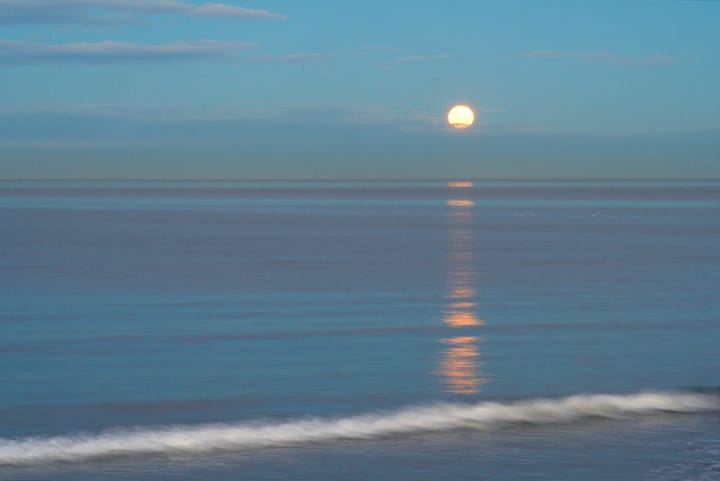

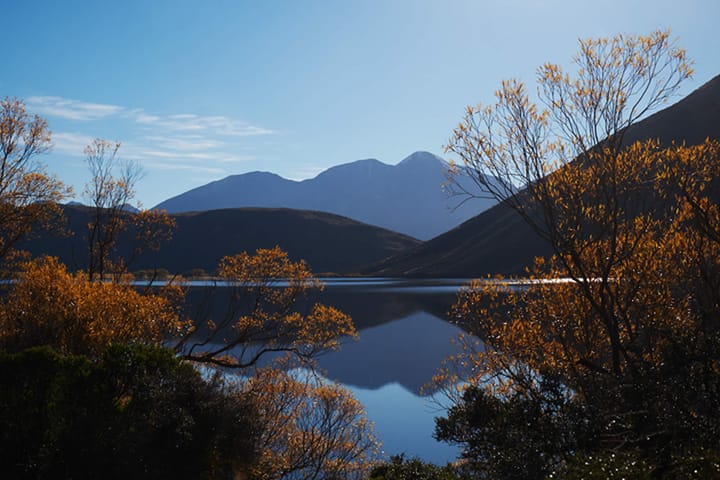
Comments ()